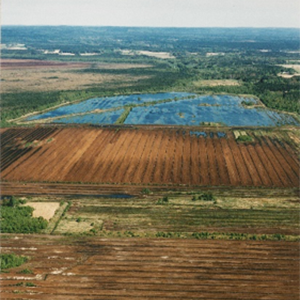Contact
sabine.jordan@slu.se, 018-671946

Peat use in horticulture is increasingly discussed due to its climate-relevance and the disturbance of mires. At the same time, peat is the most important, natural horticultural growing media constituent and only a few other organic constituents have gained acceptance in horticulture, but cannot adequately replace peat in quality and quantity.
Consequently, sustainable development concepts such as wet agriculture (paludiculture) are needed and a new resource for growing media constituents should be found. Peat mosses (Sphagnum spp.) are in the focus, as they are the main peat forming plants in bogs and have similar physical, chemical and biological characteristics as the most common growing media constituent peat.
Sphagnum Farming on rewetted cutover peatlands can reduce Sweden’s climatic impact and the environmental objectives “Reduced Climate Impact”, “Thriving Wetlands” and “Flourishing Lakes and Streams” can thus be achieved. The cultivation of peat mosses stops peat oxidation, simultaneously provides sustainable biomass for growing media and creates a new carbon sink due to peat formation. Sphagnum Farming has been conducted in many countries, but in Sweden, it is hardly recognised even though the prerequisites are promising.
However, many extracted peatlands are close to termination or have been rewetted already and thus it is time to introduce and to monitor an innovative alternative to conventional drainage-based peatland agri- and silviculture.
That will enlarge our knowledge about rewetted extracted peatlands and gives Sweden the possibility to report urgently needed emission numbers from those sites in the national climate inventory and on an international level. To introduce the cultivation of renewable raw materials (Sphagnum) for horticultural growing media and to gain specific information on potential greenhouse gas emissions from rewetted and Sphagnum Farming sites are important tasks as well.
sabine.jordan@slu.se, 018-671946